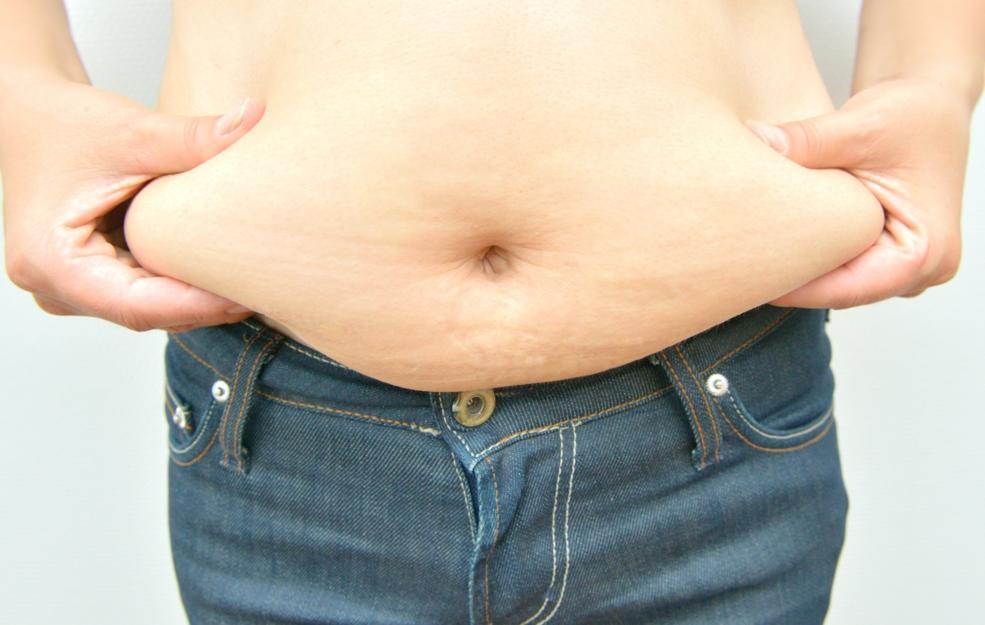What Causes Visceral Fat?
What Is Visceral Fat?
Visceral fat, if described in technical terms, would mean an excess of intra-abdominal adipose tissue accumulation. In simple words, it means there is a deep layer of fat that is stored beneath the skin further than the subcutaneous belly fat. This visceral fat is a form of gel fat, which is actually known to be wrapped around the major organs, including the liver, kidneys, and pancreas. If you are one such individual who has a protruding belly and a larger waist, then it is a clear sign your body is storing a dangerous amount of visceral fat. Even though it is very noticeable and also occurs in obese individuals, anyone can have visceral fat, and some may not even know that they have it. This visceral fat is often dangerous, and it can also change the way the body normally feels and operates.
Below are the causes that lead to the accumulation of visceral fat in the body:
- Insulin resistance: This is considered a central process in confining the uptake of glucose, which is accomplished by the muscles and also mediated by insulin. Visceral fat is seen to be excessive in patients who are insulin resistant. In normal cases, when an individual’s insulin level rises, for example, after the intake of a meal, the insulin tends to stop lipolysis, which is one of the processes that leads to the breakdown of fat. When an individual is insulin resistant, this lipolysis is not turned off, which it otherwise should have. As there is an increase in the visceral fat, there is a reduction in a highly beneficial protein called adiponectin. This protein is known to increase the oxidation of fatty acids, thereby promoting the clearance of excess fat present in the tissues and also improving insulin sensitivity.
- Stress: Stress leads to an increase in the levels of cortisol in the body, and these high levels cause the body to start storing excess visceral fat. Visceral fat is known to be stored within the abdominal cavity, which means it appears as belly fat, and when one is constantly under stress, it leads to excessive cortisol being released into the body. This in turn can lead to an increase in appetite and a desire for the individual to start eating fatty foods. Hence, it is said that if one wants to lose that belly fat, they should start exercising and also plan their meals, but at the same time, they should learn to manage their stress since it is said to play a large role in getting rid of belly fat. This would ultimately keep any kind of disease and inflammation at bay.
- Age: Certain research has shown that BMI and weight are known to increase gradually during the adult life of an individual. They tend to reach their peak value when the individual is between the ages of 50 and 60 years in the case of both men and women. Apart from the increase in weight, there is also a reduction in the fat free mass, which is known to be the lean mass and is mainly composed of muscle tissues. From the age of 20 to 70, it has been reported that the lean mass as well as the muscle mass tend to decrease by 30 percent. This in turn can contribute to the redistribution of fat, which can be seen in older adults, wherein they have an increased risk of belly fat accumulation, thereby leading to an increase in the risk for certain diseases.
- Intake of sugary foods and beverages: Individuals normally consume more sugary items than they realize. A few of the high-sugar food items would include cakes, pastries, and candies. Soda flavored drinks, sweet tea, and coffee are also considered to be among the popular sugar-related beverages. Certain studies have shown a strong link between a rise in one’s sugar intake and the excess belly fat, and it can be said that it is largely due to the high fructose level of added sugar.
- Use of alcohol: Alcohol is known to have harmful effects. When it is consumed in moderate amounts, it can lead to a lower risk of certain illness such as stroke or heart attack. However, this does not stand true for all alcohol; it is only the case for red wine. An increase in the consumption of alcohol can lead to inflammation, liver-related disease, and other serious medical conditions. Certain studies have also revealed that the intake of alcohol is known to suppress the process of fat burning, and the excess calories from the alcohol are stored as belly fat, hence, it is termed “beer belly” in most cases.
- Intake of foods containing trans-fats: Trans-fats are considered to be one of the unhealthiest fats on this earth. They are said to be created through a combination of hydrogen and unsaturated fat in order to make them more stable. Trans-fats are most often used to extend the shelf life of packaged food items such as crackers or muffins. They are also known to cause inflammation in the body, which can lead to insulin resistance and other medical problems such as heart disease. In one study, trans-fats were also shown to be linked with belly fat.
- Being inactive: One of the biggest risk factors for poor health is a sedentary lifestyle. Over the past few decades, individuals have gradually stopped being active or less active, which in turn leads to an increase in the risk of obesity and abdominal obesity. Our body fat mass is largely dependent upon what we consume and how much of that energy is being used by the body. If there is a decrease in the amount of energy being used, then it contributes to certain age-related weight gain issues. A reduction in one’s level of physical activity is known to account for about half of the reduction in the body’s energy expenditure, which leads to an increase in the waistline of the individual. The main result behind an aging individual becoming less physically active could range from a lack of time to carry out any exercise, to an inability to carry out any exercise due to certain health issues or immobility. When the body is not pursuing any physical activity, it contributes to the excess belly fat, but it can also lead to a reduction in strength, poor quality of life for the individual, and being prone to injuries or diseases.
- Changes in hormones: Alterations in hormone levels is also considered to be a contributing factor and a cause of concern when it comes to tracking age-related weight gain. Menopause is one of the other hormonal changes commonly seen in women. During puberty, the estrogen hormone tends to signal the body to store fat on the hips as well as the thighs so as to prepare for a potential pregnancy. This is known to be subcutaneous fat and is not harmful, however, it would become difficult to lose it in certain cases. Menopause is known to occur mostly a year after a woman has had her last menstrual period. Around this time, there is a dramatic drop in estrogen levels, leading to the fat being stored in the middle of the abdomen instead of the hips and thighs. It has been seen that some women gain more belly fat at this time than others. This can be partly blamed on genetics as well as the age at which menopause began.
















